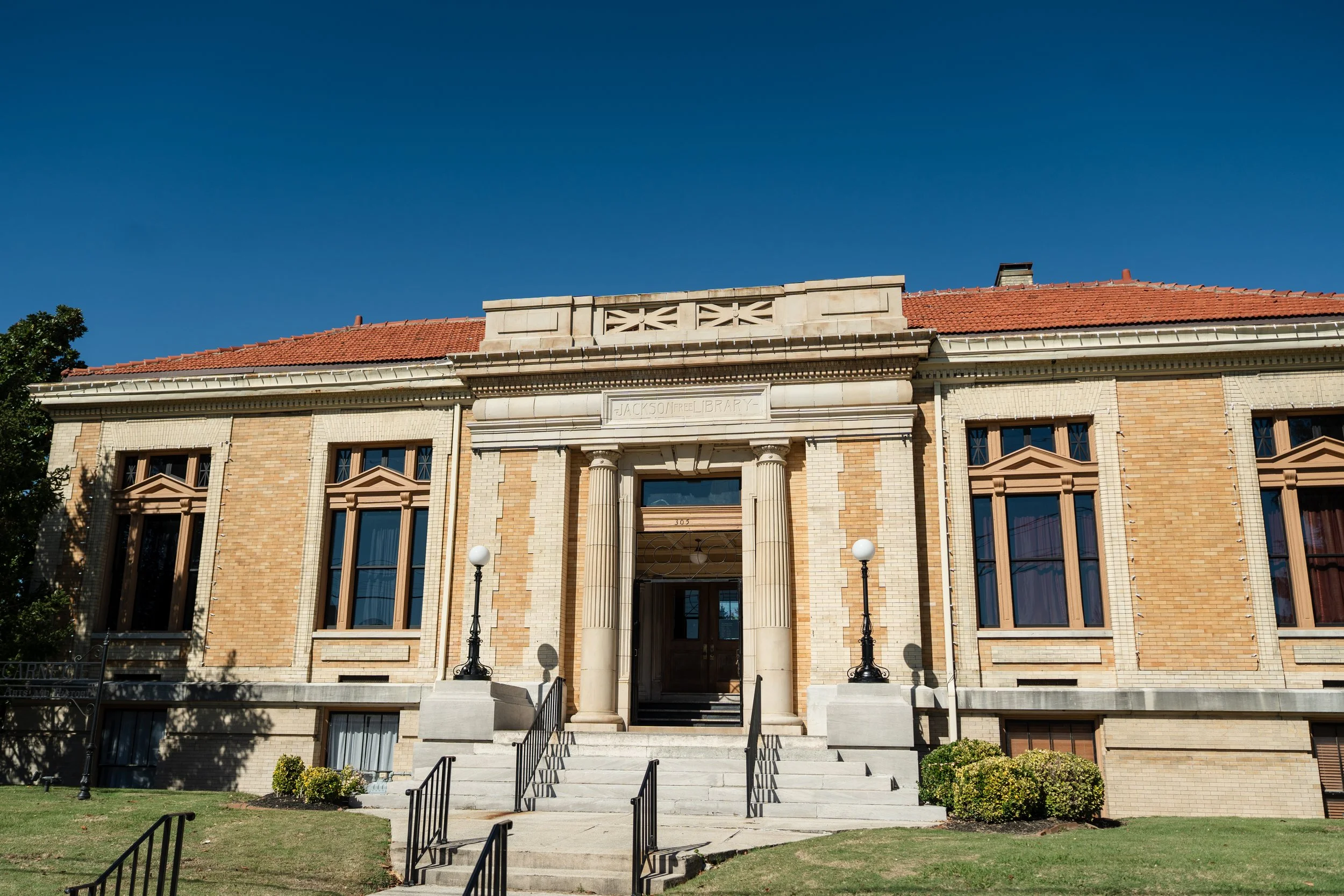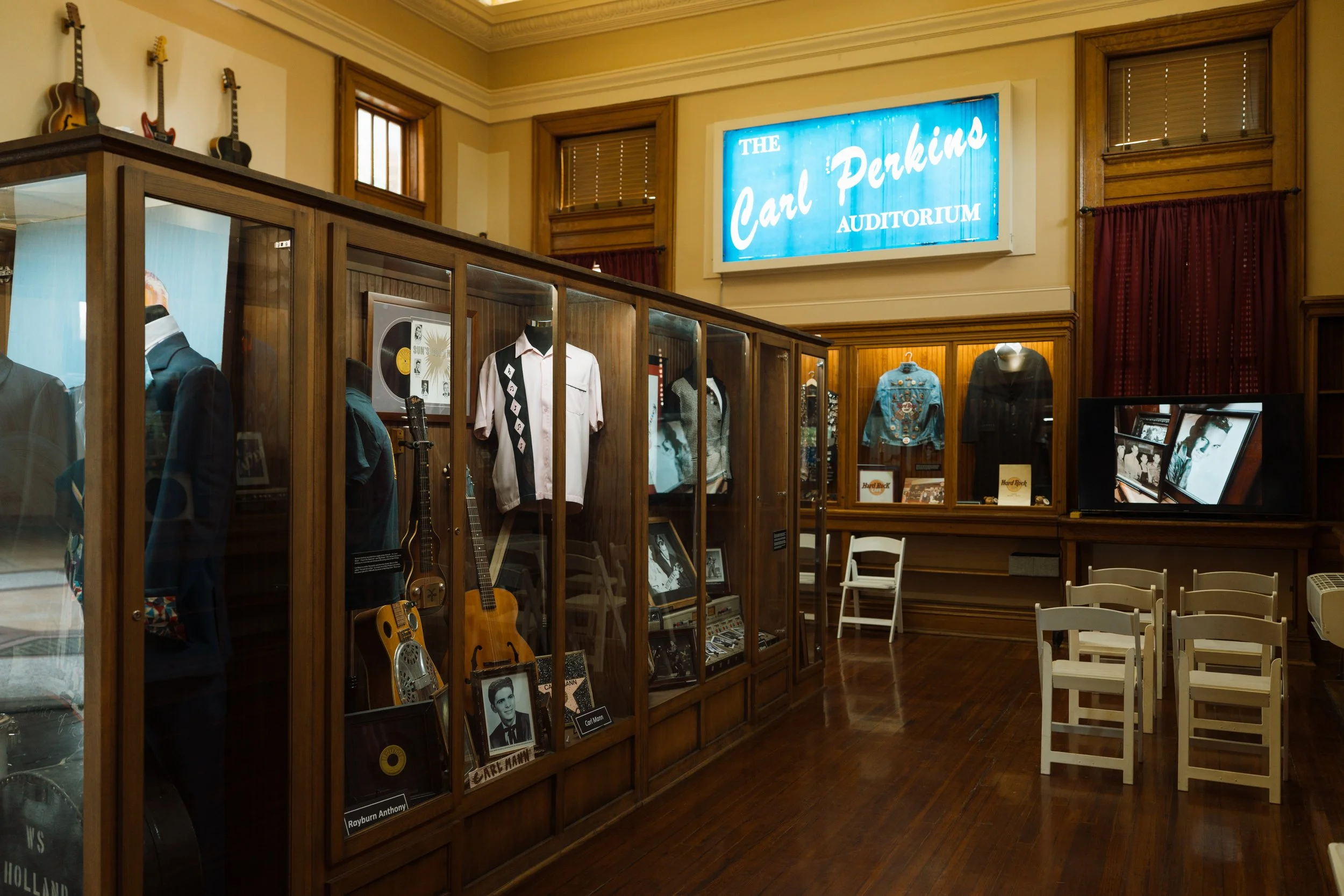One Year In: Creating a Community Museum
Written by Aaron Hardin
Photos by Maddie McMurry
It’s hard to believe that just over a year has passed since I became the director of the Carnegie Center for Arts and History. When I accepted the role, I knew I was stepping into a beloved space with deep roots in Jackson’s cultural life and history. It’s a daunting task changing such an important institution, but I knew the Carnegie could serve our city in new ways.
The fall of 2024 was spent measuring, sketching, brainstorming, modeling, and solving future problems. I spent countless hours standing in the atrium, staring at a wall and imagining potential gallery configurations. After many drafts and conversations with staff, artists, and community members, we made a plan and worked tirelessly to create a new path for the Carnegie. Every one of those hours was in service to a single goal: providing access to great art, stories, and history for the people of Jackson.
The Carnegie began its life in 1901 as the Jackson Free Library (Jackson’s first library) delivering information, entertainment, and educational mobility to its patrons. Over the past 124 years, the Carnegie has served the community in many ways. My hope was to recapture some of its original purpose as a cultural resource, inspiring our friends and neighbors to experience art and storytelling that moves them.
Sometimes great stories come from just down the road. This October, we close out our Tennessee Music Box exhibition, highlighting handmade regional instruments created after the Civil War. Each piece is unique, crafted from readily available materials such as fence boards, staples, and snuff tins. Despite limited means, these West Tennesseans found ways to make music together by whatever means necessary. Standing before these instruments, you can feel the resilience and creativity that have always defined this region.
Other stories come from beyond our city limits. Facing Depression: Photographs from Dorothea Lange is an exhibition I’ve dreamed of bringing to Jackson for years. The photographs explore the Great Depression’s profound impact on poor and working-class Americans across the West and rural South. Lange delicately captures one of the most challenging eras in American history while revealing the perseverance and dignity of each person she photographed. Her images of farm workers, families, and migrants resonate deeply here in West Tennessee, where the landscape and labor history connect us to the same struggles and triumphs. Watching visitors stand quietly before her photographs, I’ve seen how art from decades ago can still move us to empathy and reflection today.
As November approaches, I’m excited to share We Hope You Fail Better, an exhibition of art and illustrations by Brad and Kristi Montague. The Montagues, New York Times bestselling authors and artists, use humor and honesty to remind us that creativity is often born from failure. Their work is full of kindness and encouragement, something that feels especially important for families, teachers, and young visitors. Seeing their playful illustrations and vibrant installations come to life in a museum setting is a joy. With sculptures, paintings, and videos, children and their adults see how mistakes become possibilities and hope is a kind of art form.
In addition to national and regional exhibitions, the Carnegie has a strong commitment to our local artists, musicians, and storytellers. This winter, we’ll open Suede & Blue, our first community group exhibition, celebrating the 70th anniversary of Carl Perkins’s “Blue Suede Shoes.” Rather than presenting the song’s history in a traditional way, we invite artists to interpret it visually, capturing the spirit of self-expression, rebellion, and joy. Perkins’s music continues to resonate with generations of listeners, and we want to see what that might look like through contemporary eyes.
And did you know we have a theater in the basement? The Basement Theatre has been bustling this past year with musical performances, plays, and improv comedy. With only seventy-two seats, each show feels close and special. Personally, I love being so near the action. It makes every performance feel alive. This intimate space is a true gem for local performing artists.
We wouldn’t truly be a community museum without educational opportunities. Through our Artist Residency Program, local practitioners have led workshops in visual and performing arts, from songwriting to painting, photography, and comedy. Watching participants collaborate, laugh, and learn together is such a rewarding part of my job. These experiences help build relationships among community members while reminding us of our shared goals and dreams.
Another highlight of the past year has been our partnership with Dreamers and Makers Art Club. As I walk to my office, I often hear the sounds of middle school students creating art, learning to cook, and talking about music. Under the guidance of founder and executive director Ashley Akerson, these young artists fill the Carnegie with energy and hope. Their presence is a reminder of why spaces like ours matter, because they nurture the next generation of creators and thinkers.
Running a museum can look like a million different things depending on the day, but at its heart, my job is to be a storyteller. The museum is a space to share the stories of our community, and to welcome new stories from other places and voices. My goal is to elevate the voices that remind us who we are as a people of story. I hope you’ll be part of our story here at the Carnegie.







